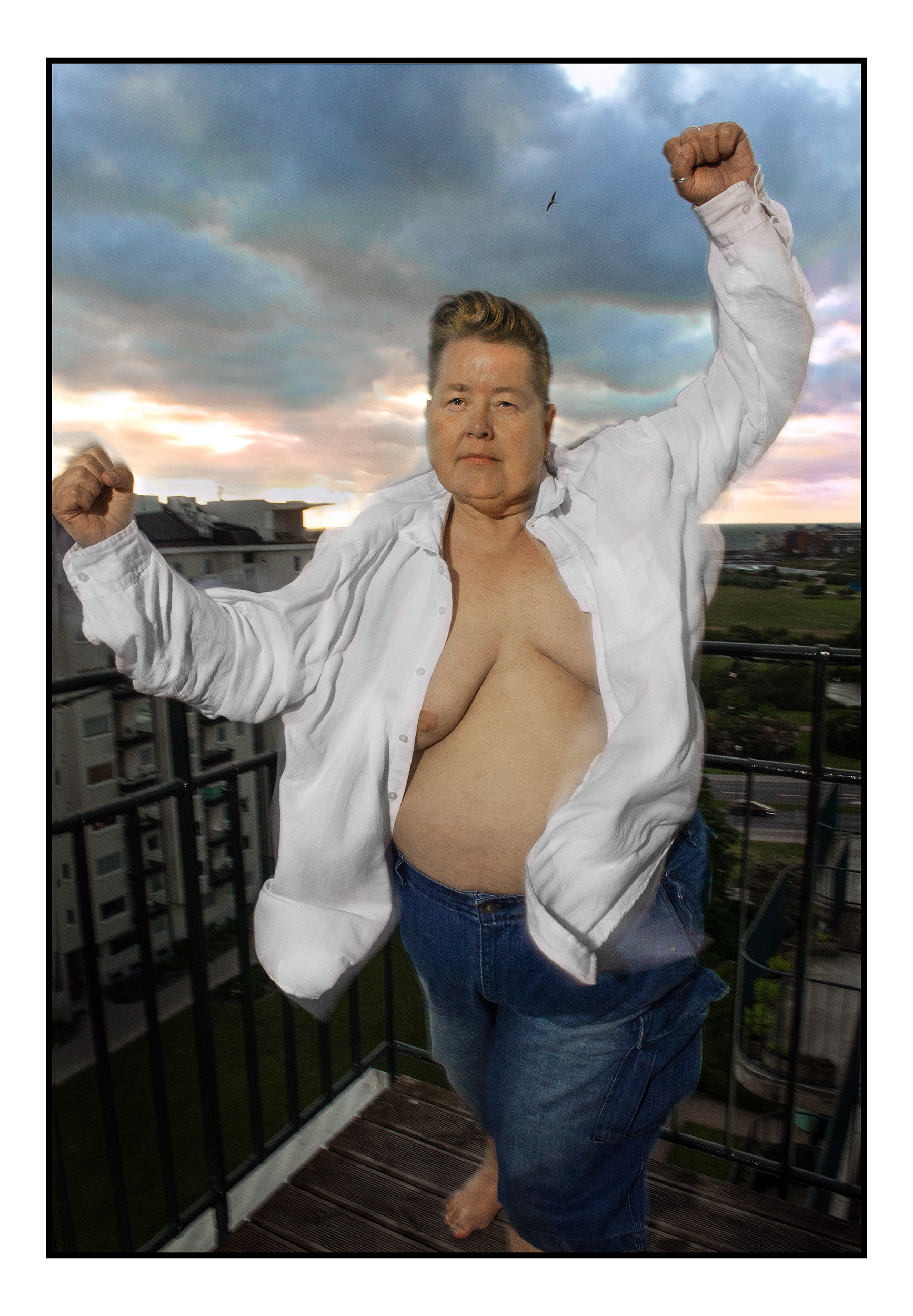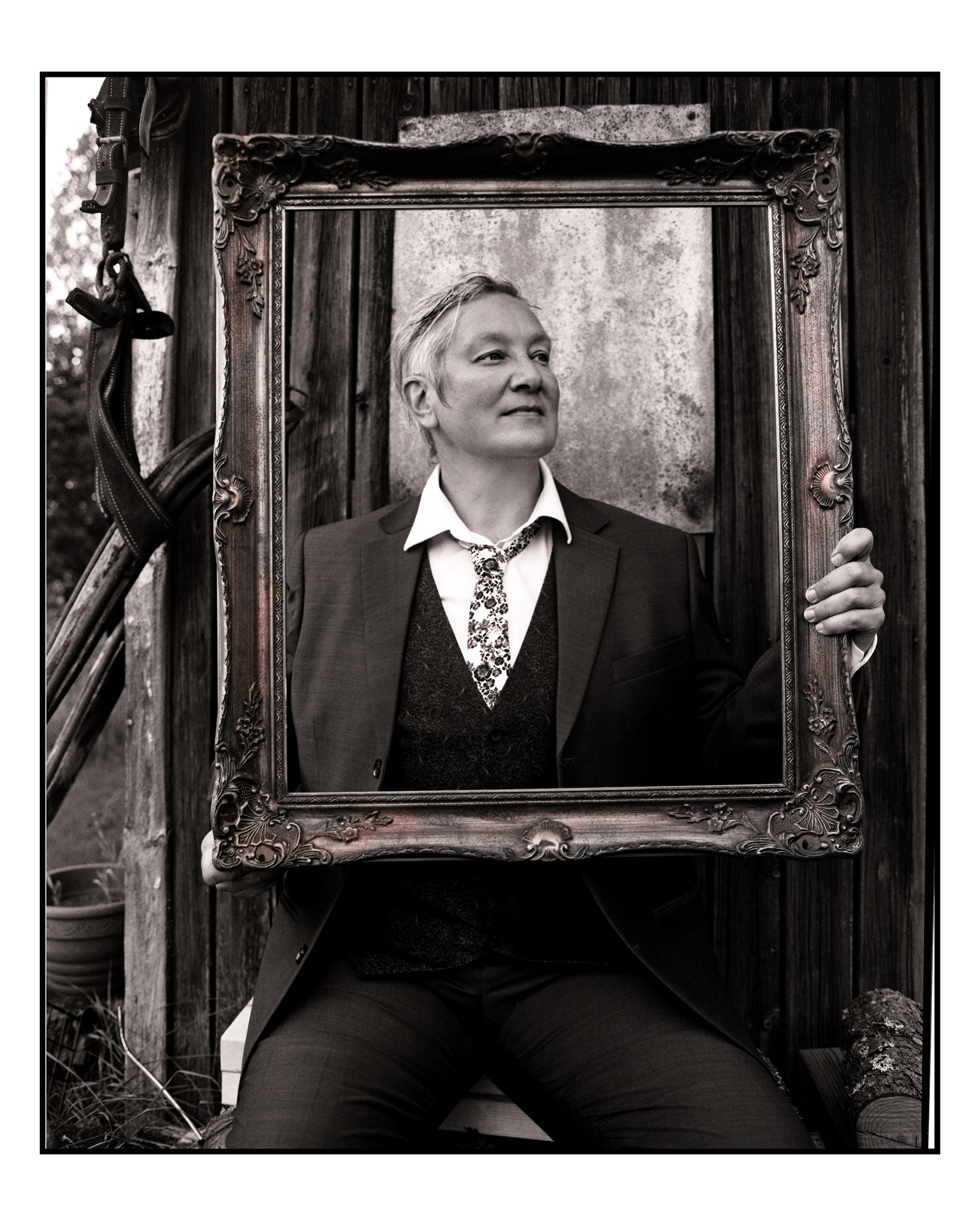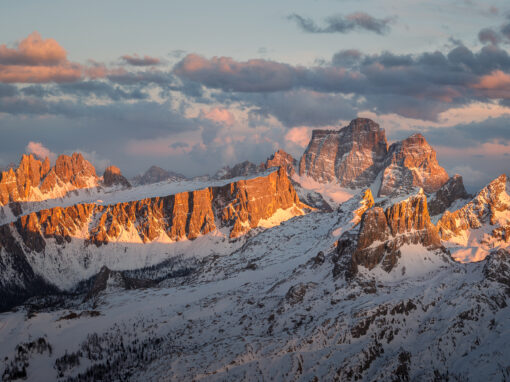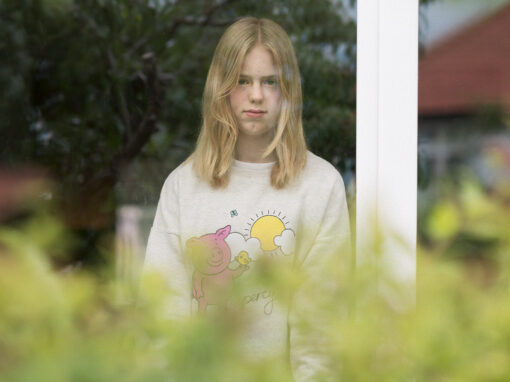Two things happened recently that have made me consider the position of the human subject and representation in photography. First, in late 2019 I attended an exhibition here in Toronto at the excellent Ryerson Image Centre. This was one of the last exhibitions that I was able to visit before the arrival of COVID-19 and eighteen months of on/off lockdowns here in Ontario. Perhaps partly because of this and partly because of the exhibition’s content, it has stayed at the forefront of my mind.
The exhibition was entitled The Way She Looks: A History of Female Gazes in African Portraiture. The primary purpose of my visit had been to view the wonderful work of the late great Malians Seydou Keïta and Malick Sidibé. I have a particular fondness for Keïta’s brilliant portraits, and it is always lovely to see large prints “in person”. Yet, my biggest takeaway was not their work; it was the representation of African women in the exhibition as a whole.
One section was focused on colonial photography from the 19th century, and it did not make for comfortable viewing. With perhaps only one exception, the Victorian photographers had reduced their subjects to exoticized caricatures without any consideration of their shared humanity. This contrasted dramatically with the section that featured later 20th and 21st century pictures. The subjects were given a voice. They were able to say, “This is me! This is who I am!” The pictures were about empowered individuals rather than the victims of a cruel anthropology.
Secondly, in last month’s Look Closer, I discussed Barbara Alper’s wonderfully surprising photograph of a naked man at a popular New York 80s gay hangout. I wrote that the “naked man is not judged or humiliated by this photograph. His common humanity, in a time of rampant homophobia fuelled by the tragedy of the HIV/AIDS epidemic, is emphasized before us.” It may not have been in either Alper or the subject’s thoughts at the time, but the picture gave him an undeniable agency. In this article, I want to discuss how photography can be used to empower and give a voice to those who might otherwise be denied one, and to look at the work of photographers whose pictures do exactly that. In particular, I want to focus on photographers who work with the LGBTQI+ communities.
A perfect place to start is in recent history and the work of Robert Mapplethorpe, which is both celebrated and controversial. Times have changed considerably, and thankfully so have many minds, but the more graphic of his brilliantly taken images may still shock the unprepared. His images of homoerotica outraged conservative America and beyond. In some ways, I like to think of Mapplethorpe as someone who cleverly trolled the establishment before the term “troll” even existed. As late as 1998, a book of his work caused a police investigation at the University of Central England after its content was deemed to be prosecutable as obscene. To the University’s credit, they did not back down and remove the book. The police confiscated the book, and the vice-chancellor was interviewed under caution before the book was returned in what was described as ‘a slightly tattered state’.
His photograph of Brian Ridley and Lyle Heeter, which can be found among Time’s 100 Photos is, to my mind, kind-hearted and deeply humanistic. It does not shout, but just plainly and insistently states that the subjects are human just like the viewer. Most may not understand their lifestyle, but through this portrait we must recognise that it is theirs and deserves our acceptance rather than judgement. What is more, Mapplethorpe clearly cared about his subjects. The National Gallery of Scotland notes:
“The close relationship between the artist and his subjects might be inferred from the fact that the subjects have disclosed their names. This might also suggest that they trusted the artist to portray them with respect. As the American art critic Arthur C. Danto writes: ‘they could display their leather gear and shiny chains with pride. They trusted the artist not to make them look like fools, to show them as they would wish to be shown’.”
Sadly, Mapplethorpe died aged 42 in 1989, a victim of HIV/AIDS. His legacy is a complex one that is full of challenging, controversial, and brilliantly taken images that still upset conservatives, but have also helped change minds and attitudes.
For the rest of the article, I want to look at the work of two respected and prominent photographers who create work that gives voices to LGBTQI+ communities. These photographers are Eva Weiss and Del LaGrace Volcano. They both produce outstanding images that I consider humane and impressive in representation but do so in quite different ways. Weiss’s work is gentle and persuading but never less than effective. Conversely, Volcano’s images are often confrontational and demand that the viewer pays attention to the subject.
Since graduating with a Bachelor of Fine Arts in 1971, Philadelphia-native Eva Weiss has enjoyed a successful fine art photography career. Weiss, who names Diane Arbus as a life changing influence, has had her work published and exhibited globally. For example, her photographs of performance artist Lois Weaver, a feminist and LGBTQ+ icon, featured on the cover and throughout Weaver’s autobiographical book The Only Way Home is Through the Show. The wonderful cover image Lois Weaver – Rollers is shown below. Her work with the LGBTQI+ community has been the great artistic passion and focus of her long and impressive career.
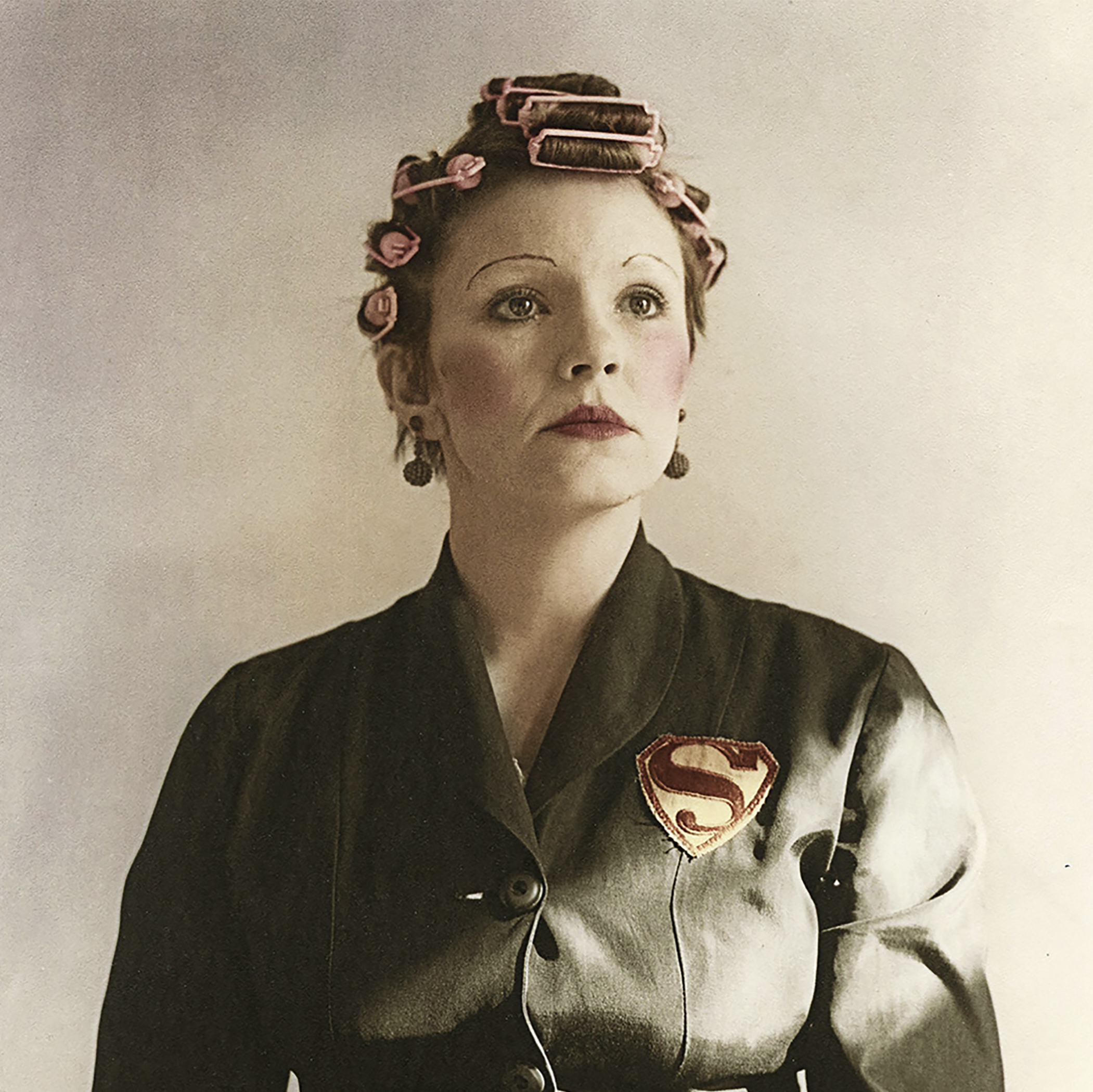
She is at her strongest and most personally comfortable when making portraits. She feels that it is something she has a “knack” for and is naturally able to put her sitters at ease. Much of her portrait work has focused on theatrical performers which she feels makes her life as a photographer much easier in terms of posing. She describes her photographic process as simple and works only with natural light. In recent years, she has transitioned from film to digital which allows for the creation of a distinctive colour palette when post-processing her work.
When I look at Weiss’s work, the thing that strikes me most clearly is how sensitive and humane the photographs are. I think this is beautifully illustrated by one of her early portraits which features the renowned choreographers Bill T. Jones and Arnie Zane.
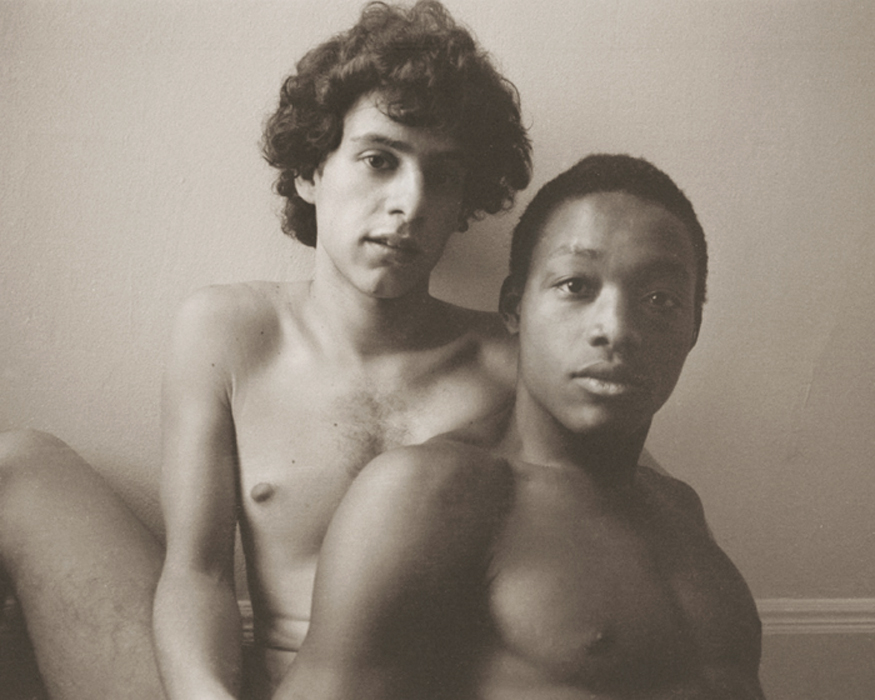
The portrait, made as part of a series of nude photographs of the two men, is compelling. Jones stares confidently and directly at the camera, but he does not confront the viewer. His expression is one of youthful innocence and wonder. Zane sits behind and appears somewhat nervous and shy. The photograph beautifully captures the hope in a burgeoning personal and professional partnership that would endure until Zane’s untimely death in 1988, a victim of the tragedy of the HIV/AIDS epidemic.
Weiss’s portrait of Weaver, wearing rollers in her hair, has a quite different impact but is no less persuasive in its message. The image makes a powerful feminist statement about ideas of fashion, the role of women, and expectations of beauty. For me, it immediately recalls the “land girls” of World War II, the women who kept the factories and farms running in Britain during the conflict. The addition of the Superman “S” logo emphasises superwomen everywhere. The pose is exceptional. It resembles that of Che Guevara in Alberto Korda’s iconic photograph Guerrillero Heroico. I have no idea if this was planned, but either way, it is a fantastic touch which makes this portrait special. The Weaver of this photograph is a politically iconic superwoman.
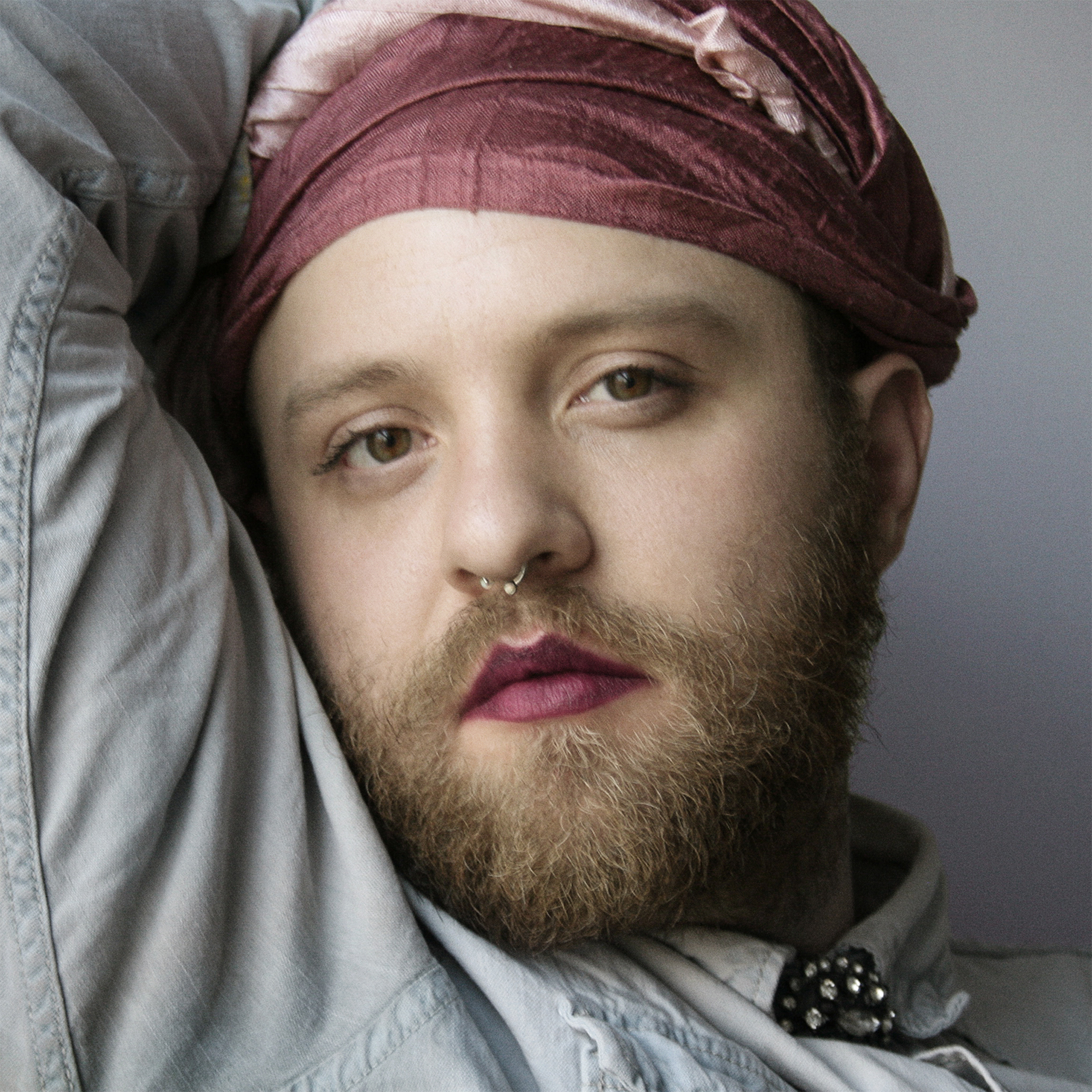
Weiss’s portrait Josh now J. is her favourite among her recent work. Whilst J. stares directly at the camera, like the photograph of Jones and Zane, the viewer is not confronted, but seductively drawn in to engage with the subject. To me, it is a photograph that wants the viewer to study and understand every aspect. From the colours of the lipstick and scarf, the nose ring, the beard, the collar adornment, and J.’s eyes, all are critical details that come together to create an image that represents J.’s identity, and it fits Weiss’s oeuvre perfectly.
Weiss’s persuasive body of work is impressive in execution and meaningful in message. It stands in fascinating contrast to Volcano’s more direct and confrontational work.
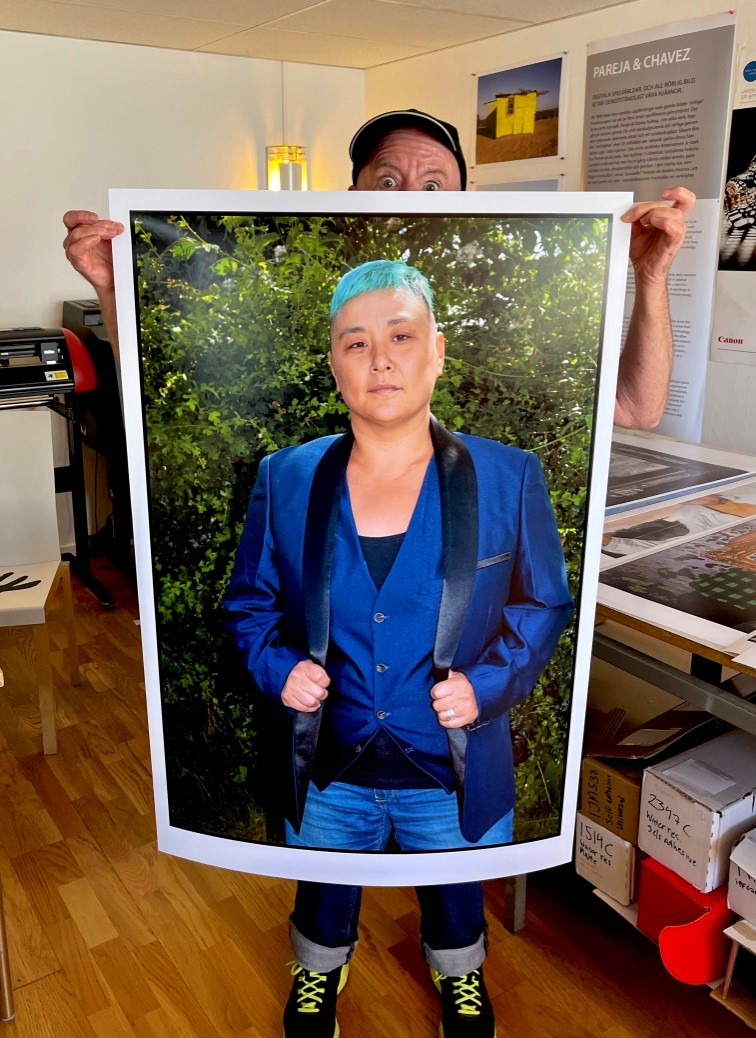
Del LaGrace Volcano uses photography to be an eloquent and powerful voice for the underrepresented. Their work with the LGBTQI+ community, to which they belong, that demands your attention. California-born, but now based in Sweden, they graduated with a master’s degree in photography from the UK’s University of Derby in 1992 and have enjoyed a remarkable and storied career. They state that they are “an artist/photographer, intersex activist, and gender queer parent for social justice”. Volcano wants their work to show that there is more to gender beyond the binary. Not only does Volcano, who was born intersex, challenge gender norms, but also societal norms with regards to aging. They claim to be living the life of someone 20-40 years younger than their biological age. It is clear from their work and my conversations with them that they live up to their own definition and intent. The work, which explores human sexuality and gender identity, has been shown globally including exhibitions at London’s Victoria and Albert Museum, the Tate Gallery, the Hayward Galley, and the Macedonian Museum of Contemporary Art to name but a few. They have also been featured in The Guardian’s My Best Shot feature.
Volcano is currently featured in The Rebel Dykes Art and Archive Show at London’s Space Station Sixty-Five which runs until the 17th of September. However, for this article I want to examine two of their portraits from their latest solo exhibition, Gender Optional: Profiles of Courage, which will be shown in Malmö, Sweden from the 17th of July to the 26th of September. This new work will form part of a larger solo exhibition entitled Love Lust Legacy: Del LaGrace Volcano 1975 – 2021, which will be exhibited at Örebro Konsthall in the small city of Örebro from August 28th to September 24th.
The purpose of Gender Optional: Profiles of Courage is not only “to focus more about what our bodies DO as we move through the world rather than get stuck in semantics-in the labels, pronouns, etc, that get attached to us” but also to “engage in the current debates around gender in a way that is more productive than what seems to be happening in the media.”
The exhibition is a body of work that highlights the strength and dignity of the sitters. In addition, the humanity of the participants is emphasised by the inclusion of a QR code with each photograph. By scanning each code, the viewer can hear directly from the portrait’s subject themselves. They answer a series of questions and tell their own story (1).
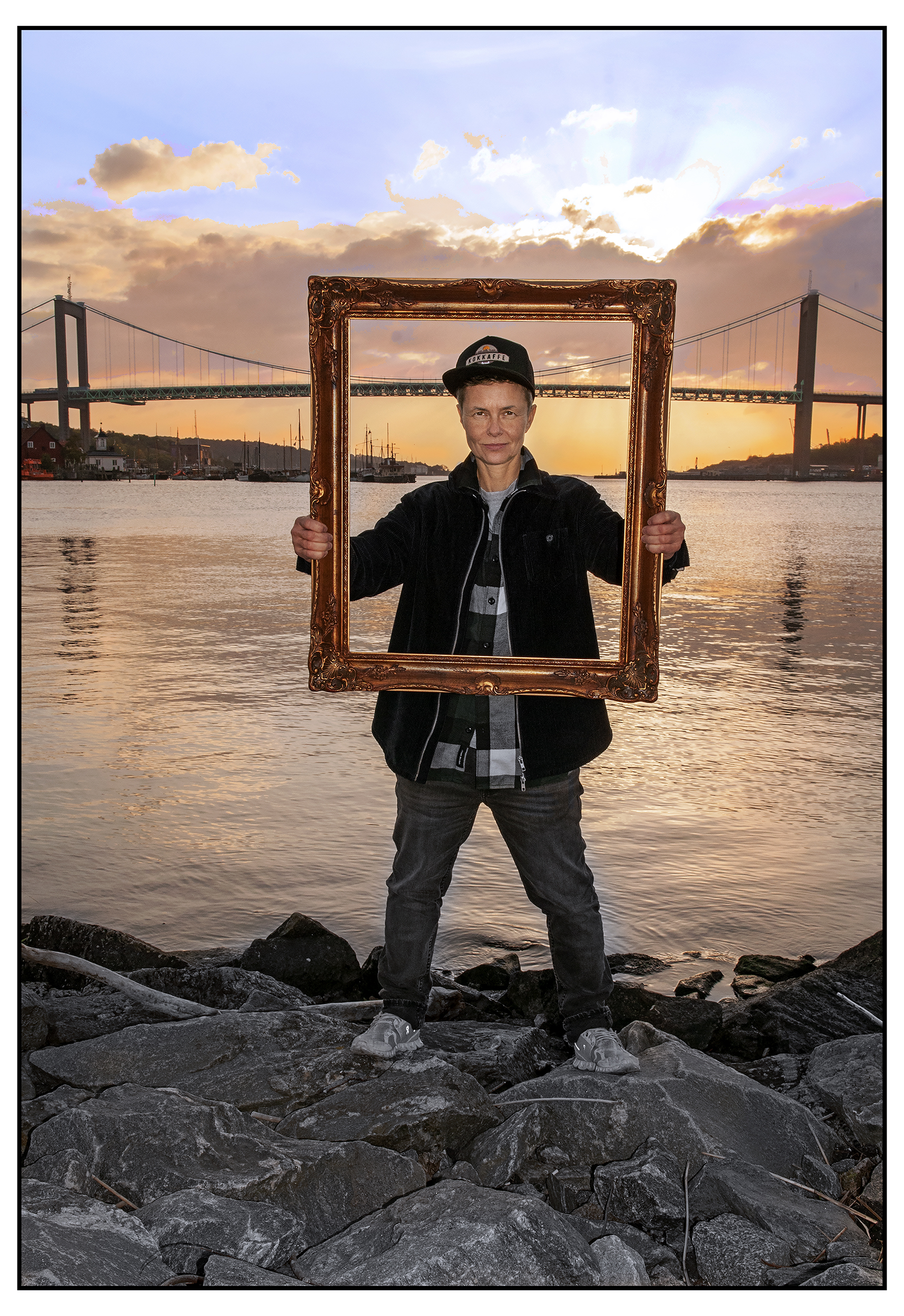
One frequent feature in Volcano’s portraits is that the subject confronts the viewer and looks directly at the camera, and this is the case with the portrait Anna Linder. Anna Linder is casually dressed, perhaps stressing the everyday nature of her life. However, the use of the gold frame stresses the importance of the person within whilst the confrontational stare pulls our gaze away from the striking sunset and challenges us to recognise that Anna Linder herself is not mundane, but is, as the title of the exhibition suggests, a “Profile of Courage”. I do not know anything about Anna Linder as a person beyond this photograph, but Volcano’s powerful portrait demands that I find out more: I want to know Anna Linder’s story.
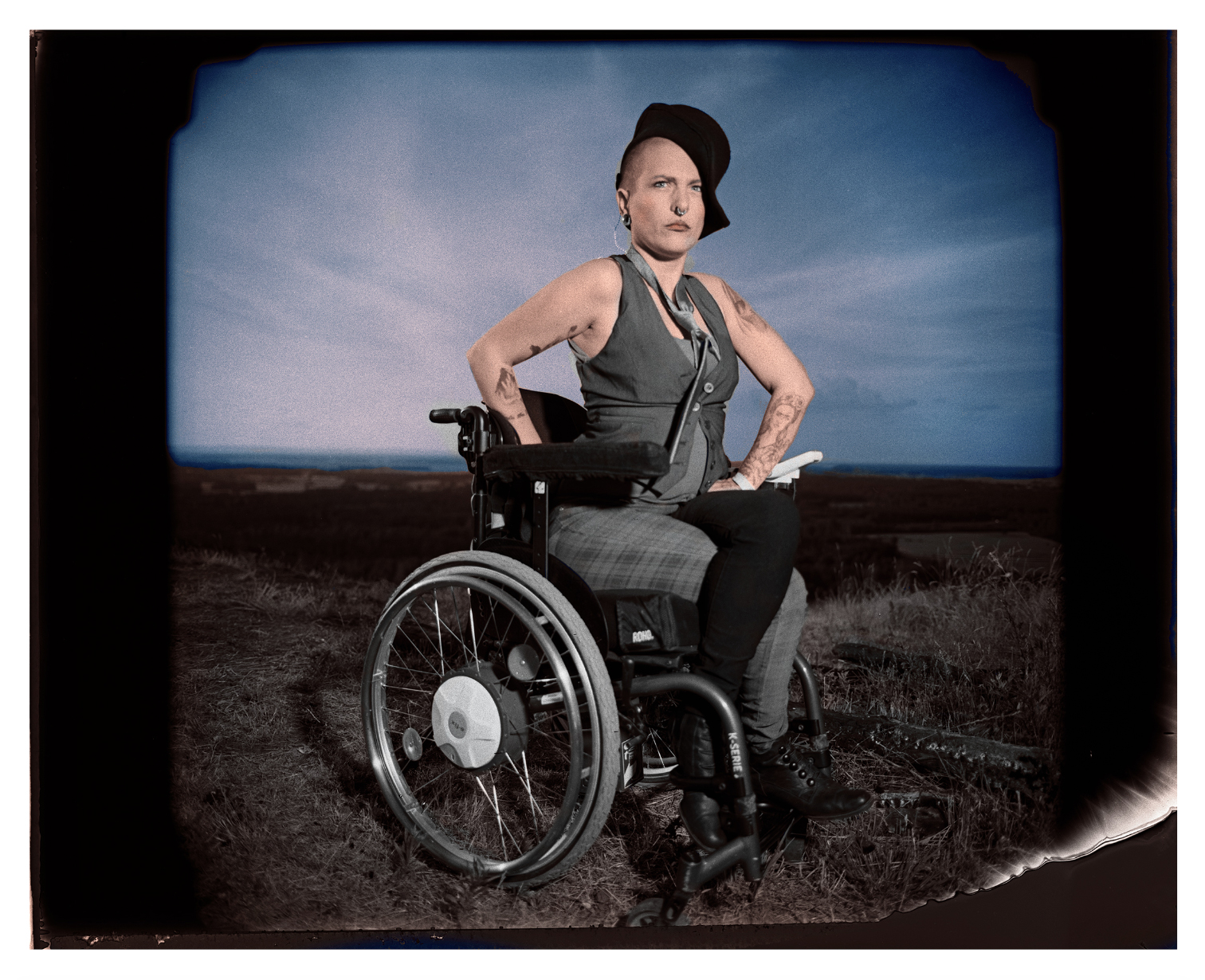
The exceptional portrait of Frida Ingha is even more direct in its confrontation than that of Anna Linder and is equally as effective as a statement. Initially shot using a Polaroid 665 film, the photograph is beautiful and captivating. You, the viewer, are required to look directly at and engage with the subject. Frida Ingha herself feels that this portrait of her is “fierce” and I could not agree more. There is no hiding nor denying her identity in this image. Just like Anna Linder, we are compelled to recognise that Frida is a “Profile of Courage”.
After spending time communicating with Volcano and reviewing their outstanding work, my only disappointment is that I am not going to be in Sweden to visit and support the exhibition. If you are in the area, I could not recommend it more highly.
This article has been one of the most challenging and satisfying that I have written so far. The process has inspired me to ask questions and better understand the wonderfully diverse nature of our shared human experience. I feel I have been privileged to have taken this written journey in the company of two extraordinary artists in Eva Weiss and Del LaGrace Volcano. They have generously allowed me access to their worlds. They bring assertive and powerful voices to the people and communities that they photograph. Photography is much better for having them and other voices like theirs around.
(1) The stories can also be found on Volcano’s website.
EVA WEISS
DEL LaGRACE VOLCANO
OTHER IMAGES FROM THE ARTISTS’ PORTFOLIOS:
EVA WEISS
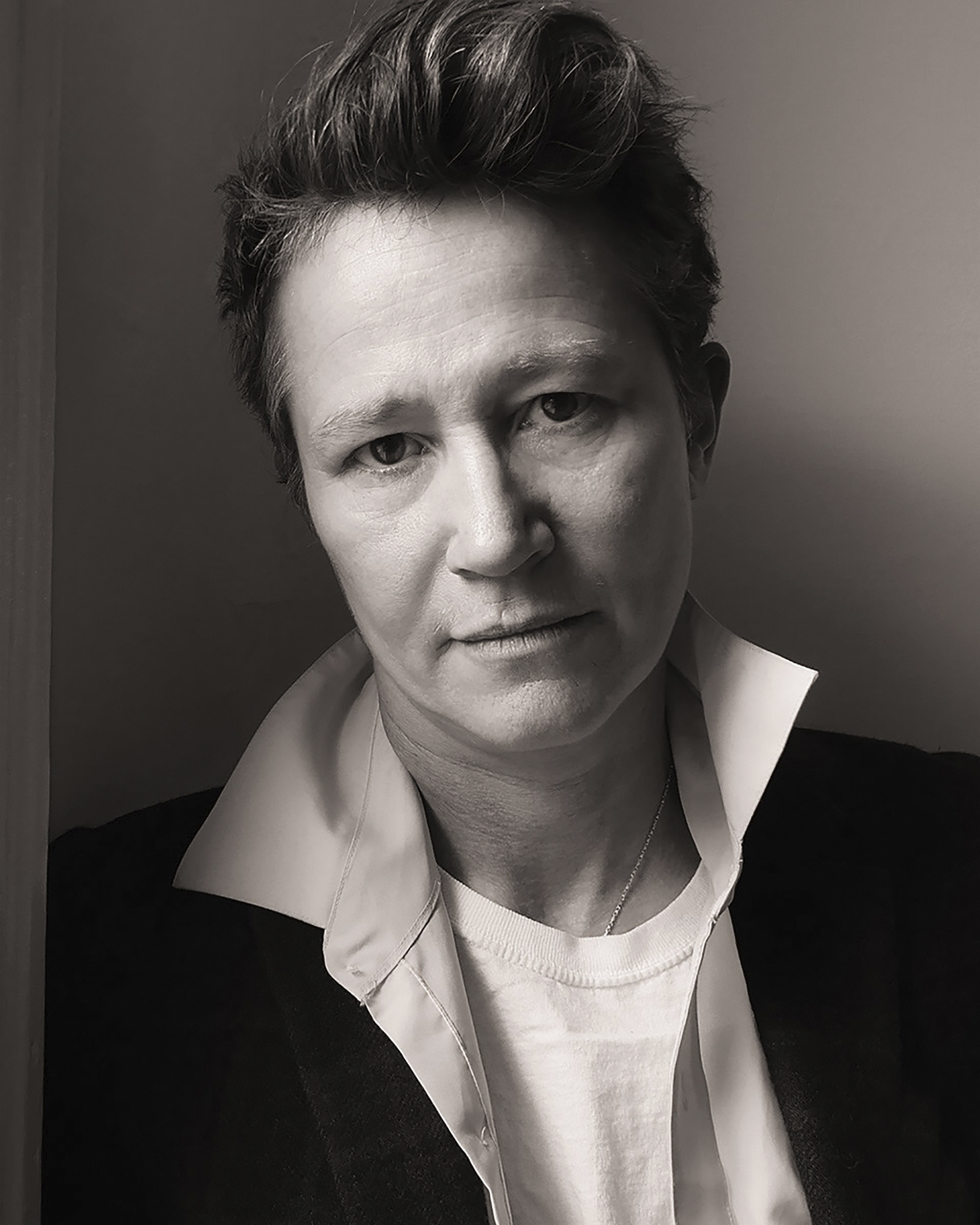
DEL LaGRACE VOLCANO
